Tips for Growing Grass in Clay Soil
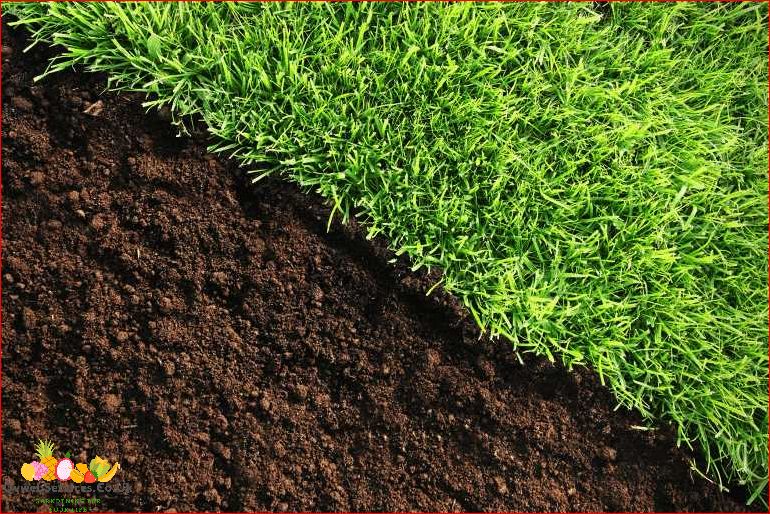
Clay soil can present a challenge for many gardeners when it comes to growing grass. Its dense and compacted nature can make it difficult for water and nutrients to penetrate the soil, leading to poor grass growth and a lackluster lawn. However, with the right techniques and a little extra care, it is possible to successfully grow grass in clay soil.
1. Prepare the soil: Before planting grass seeds, it is important to prepare the clay soil properly. Start by removing any weeds, rocks, or debris from the area. Then, break up the compacted soil using a garden fork or tiller. This will help improve drainage and allow the grass roots to penetrate the soil more easily.
2. Amend the soil: Clay soil can benefit from the addition of organic matter, such as compost or well-rotted manure. These amendments help to improve the soil structure, increase drainage, and provide essential nutrients for the grass. Spread a layer of organic matter over the soil and work it into the top few inches using a rake or garden fork.
3. Choose the right grass: Not all grass varieties thrive in clay soil. Look for grass seed mixes or varieties that are specifically designed for clay soil conditions. These grasses are typically more tolerant of heavy soils and have deeper root systems, which can help them withstand the challenges of clay soil.
4. Water deeply and infrequently: Clay soil tends to retain water, so it is important to water deeply and infrequently to avoid waterlogged conditions. Water the grass deeply, allowing the water to penetrate the soil to a depth of at least 6 inches. This encourages the grass roots to grow deeper, making them more resilient and better able to access water and nutrients.
5. Avoid heavy foot traffic: Clay soil can become easily compacted, especially when subjected to heavy foot traffic. To prevent compaction and damage to the grass, try to avoid walking or playing on the lawn when the soil is wet or saturated. Consider creating designated pathways or using stepping stones to redirect foot traffic away from the grassy areas.
6. Regularly aerate the soil: Aeration is an important practice for improving soil structure and reducing compaction in clay soil. Use a garden fork or a mechanical aerator to create small holes in the soil, allowing air, water, and nutrients to reach the grass roots more easily. Aim to aerate the lawn at least once a year, preferably in the spring or fall.
7. Provide regular maintenance: Regular maintenance is key to keeping grass healthy in clay soil. This includes regular mowing, fertilizing, and weed control. Mow the grass at the recommended height for your grass variety, and fertilize according to the specific needs of your lawn. Additionally, keep an eye out for weeds and remove them promptly to prevent competition for resources.
By following these tips and techniques, you can overcome the challenges of clay soil and successfully grow a lush and healthy lawn. With a little extra effort and care, you can enjoy a beautiful grassy oasis in your yard, even in the face of clay soil.
Assessing the Soil

Before attempting to grow grass in clay soil, it is important to assess the quality and composition of the soil. Clay soil can present challenges for grass growth, as it tends to be heavy and compacted, making it difficult for roots to penetrate and for water to drain properly.
Soil Testing
One of the first steps in assessing clay soil is to conduct a soil test. A soil test will provide valuable information about the pH level, nutrient content, and overall health of the soil. This information will help determine what amendments or treatments may be necessary to improve the soil quality for successful grass growth.
Soil tests can be done using a DIY soil testing kit or by sending a soil sample to a professional laboratory. The test results will typically include recommendations for soil amendments, such as adding organic matter, adjusting pH levels, or applying specific fertilizers.
Drainage Assessment
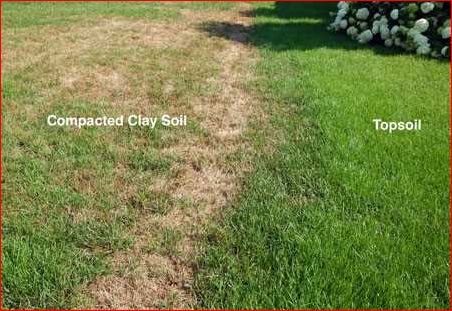
Another important aspect to consider when assessing clay soil is its drainage capabilities. Clay soil tends to hold water, which can lead to poor drainage and waterlogged conditions. This can be detrimental to grass growth as it can suffocate the roots and promote the growth of fungal diseases.
To assess the drainage of clay soil, perform a simple percolation test. Dig a hole about 6 inches deep and fill it with water. Observe how quickly the water drains. If the water takes more than a few hours to drain, the soil may have poor drainage and will require amendments to improve it.
| Signs of Poor Drainage in Clay Soil | Possible Amendments |
|---|---|
| Standing water after rainfall | Installing drainage tiles or pipes |
| Waterlogged soil | Adding organic matter to improve soil structure |
| Slow water absorption | Creating raised beds or using raised planting mounds |
By assessing the soil quality and drainage capabilities of clay soil, you can make informed decisions about the necessary amendments and treatments to improve the conditions for successful grass growth.
Preparing the Soil
Before you begin planting grass in clay soil, it’s important to properly prepare the soil to create the optimal growing conditions. Clay soil can be dense and compacted, making it difficult for grass roots to penetrate and access nutrients. Follow these steps to prepare your soil for successful grass growth:
1. Test the Soil
Start by testing the pH level of your soil. Grass typically thrives in soil with a pH level between 6 and 7. If your soil’s pH is too acidic or alkaline, you may need to make adjustments by adding lime or sulfur.
2. Amend the Soil
Clay soil benefits from the addition of organic matter, such as compost or well-rotted manure. These amendments help improve the soil’s structure, drainage, and nutrient-holding capacity. Spread a layer of organic matter over the soil and use a garden fork or tiller to mix it in thoroughly.
Note: Avoid adding sand to clay soil as it can create a dense, cement-like mixture that is difficult for grass roots to penetrate.
3. Break Up the Soil
Clay soil tends to become compacted, making it challenging for grass roots to grow. Use a garden fork or tiller to break up the soil and loosen it. This will improve aeration and water drainage, allowing the grass roots to spread and access nutrients more easily.
Tip: If the soil is particularly compacted, you may need to repeat this step multiple times or consider renting a power tiller for larger areas.
By properly preparing the soil before planting grass, you can create an environment that promotes healthy root growth and ensures the success of your lawn. Take the time to test, amend, and break up the soil to give your grass the best chance to thrive.
Choosing the Right Grass Seeds
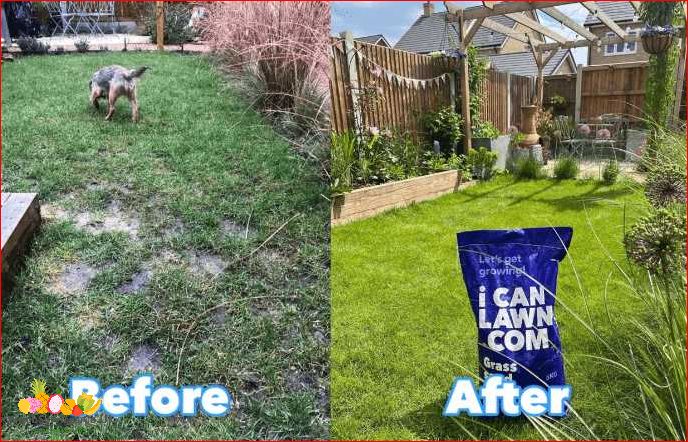
When it comes to growing grass in clay soil, choosing the right grass seeds is crucial for success. Not all grass varieties are well-suited for clay soil, so it’s important to select seeds that can thrive in these conditions.
Here are some factors to consider when choosing grass seeds for clay soil:
| Factor | Description |
|---|---|
| Drought tolerance | Look for grass seeds that are known for their drought tolerance. Clay soil tends to retain water, so selecting a grass variety that can withstand periods of dryness is essential. |
| Compaction resistance | Clay soil can become compacted easily, which can hinder grass growth. Opt for grass seeds that have good compaction resistance, as they will be better able to establish roots and grow in compacted soil. |
| Tolerance to heavy soil | Some grass varieties are better adapted to heavy soils like clay. Look for grass seeds that are specifically labeled as being tolerant to heavy soil conditions. |
| Shade tolerance | If your clay soil is in a shady area, consider selecting grass seeds that are known for their shade tolerance. These varieties will be able to thrive in low-light conditions. |
| Overall suitability | Consider the overall suitability of the grass variety for your specific climate and region. Different grass types have different requirements, so choose seeds that are well-suited for your area. |
By carefully considering these factors and selecting the right grass seeds for your clay soil, you can increase your chances of successfully growing a lush and healthy lawn.
Seeding the Lawn
Seeding is an important step in growing grass in clay soil. It is crucial to choose the right type of grass seed that is suitable for clay soil conditions. Look for grass seed varieties that are known for their tolerance to compacted soil and heavy clay.
Before seeding, prepare the soil by loosening it with a garden fork or a tiller. Break up any large clumps of clay and remove any rocks or debris. This will create a better environment for the grass seeds to germinate and establish roots.
Spread the grass seed evenly over the prepared soil. Use a seed spreader or a handheld spreader to ensure even distribution. It is recommended to use a higher seeding rate for clay soil to compensate for potential seed loss due to poor soil conditions.
After spreading the seeds, lightly rake the soil to cover the seeds with a thin layer of soil. This will help protect the seeds from birds and other animals, as well as provide better seed-to-soil contact for germination.
Water the seeded area immediately after planting. Keep the soil consistently moist, but not overly saturated, until the grass seeds germinate and establish. This may require frequent watering, especially during dry periods.
It is important to avoid walking on the newly seeded area until the grass has grown and established roots. This can take several weeks, so be patient and avoid any unnecessary foot traffic.
Once the grass has grown to a height of about 3 inches, it can be mowed for the first time. Set the mower blades to a higher setting to avoid cutting the grass too short, as this can stress the young plants.
Continue to care for the newly seeded lawn by watering regularly, fertilizing as needed, and mowing at the appropriate height. With proper maintenance, the grass will continue to grow and thrive in the clay soil.
Note: Seeding a lawn in clay soil may require additional steps and care compared to other soil types. It is recommended to consult with a local lawn care professional or extension office for specific guidance and recommendations.
Watering Techniques
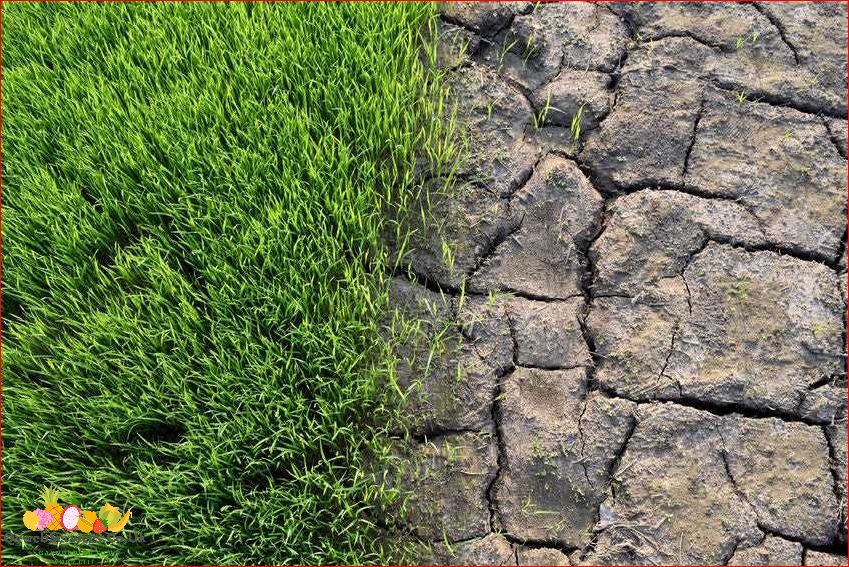
Proper watering techniques are essential for successfully growing grass in clay soil. Here are some tips to help you water your lawn effectively:
- Water deeply: Clay soil tends to hold water, so it’s important to water deeply to encourage the grass roots to grow deeper. This will help the grass become more resilient and drought-resistant.
- Water infrequently: Instead of watering your lawn every day, it’s better to water it less frequently but more deeply. This will allow the water to penetrate the soil and reach the roots, rather than just sitting on the surface.
- Water in the morning: Watering your lawn in the morning is the best time because the temperatures are cooler and there’s less wind. This allows the water to be absorbed by the soil before it evaporates.
- Use a sprinkler system: Installing a sprinkler system can help ensure that your lawn receives a consistent amount of water. This can be especially beneficial for clay soil, as it helps prevent overwatering or underwatering in different areas.
- Monitor soil moisture: It’s important to monitor the moisture level of your soil to avoid overwatering or underwatering. Use a soil moisture meter or simply dig a small hole to check the moisture level. Adjust your watering schedule accordingly.
By following these watering techniques, you can help your grass thrive in clay soil and create a lush and healthy lawn.
Fertilizing the Grass
Fertilizing your grass is an important step in promoting healthy growth, especially in clay soil. Clay soil tends to be nutrient-deficient and compacted, making it difficult for grass to thrive. By providing the right nutrients, you can help your grass overcome these challenges and establish a lush, green lawn.
Before applying any fertilizer, it’s important to test your soil to determine its nutrient levels. You can purchase a soil testing kit from a garden center or send a sample to a local agricultural extension office. The results will indicate which nutrients your soil lacks, allowing you to choose the appropriate fertilizer.
When selecting a fertilizer, look for one that is specifically formulated for clay soil. These fertilizers typically contain a higher percentage of phosphorus and potassium, which are essential for root development and overall plant health. Avoid fertilizers with high nitrogen content, as they can promote excessive leaf growth and weaken the grass.
Apply the fertilizer according to the package instructions, taking care not to overapply. Over-fertilizing can lead to nutrient runoff and pollution of nearby water sources. Use a spreader to ensure even distribution of the fertilizer across your lawn.
In addition to chemical fertilizers, you can also use organic fertilizers to improve the health of your grass in clay soil. Compost, well-rotted manure, and bone meal are all excellent organic options. These fertilizers not only provide essential nutrients but also improve soil structure and drainage.
It’s important to fertilize your grass at the right time. In general, early spring and late fall are the best times to fertilize, as grass is actively growing during these periods. Avoid fertilizing during hot, dry weather, as this can stress the grass and increase the risk of burning.
Regular fertilization is key to maintaining a healthy lawn in clay soil. By providing the right nutrients at the right time, you can help your grass grow strong and vibrant, even in challenging soil conditions.
Mowing and Lawn Maintenance
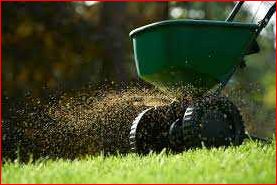
Proper mowing and lawn maintenance practices are essential for the healthy growth of grass in clay soil. Here are some tips to help you maintain a beautiful and thriving lawn:
- Set your mower at the correct height: It is important to set your mower at the right height to prevent stress on the grass. For clay soil, it is recommended to mow the grass at a height of 2.5 to 3 inches. This height allows the grass to develop deep roots and provides shade to the soil, reducing moisture evaporation.
- Mow regularly: Regular mowing helps to promote healthy growth and prevents the grass from becoming too long. Aim to mow your lawn once a week during the growing season, and adjust the frequency based on the growth rate of your grass.
- Use sharp blades: Dull mower blades can tear the grass instead of cutting it cleanly. This can lead to stress and damage to the grass. Make sure to sharpen your mower blades regularly to ensure a clean cut.
- Leave the clippings on the lawn: Grass clippings contain valuable nutrients that can benefit the soil and the grass. Instead of bagging the clippings, consider leaving them on the lawn. This practice, known as grasscycling, can help to improve the soil quality and reduce the need for fertilizers.
- Avoid mowing when the soil is wet: Mowing wet clay soil can lead to compaction and damage to the grass. Wait until the soil has dried out before mowing to prevent these issues.
- Water deeply and infrequently: Clay soil tends to retain water, so it is important to water deeply and infrequently. This encourages the grass to develop deep roots and helps to prevent shallow root growth. Aim to water your lawn 1 to 1.5 inches per week, depending on the weather conditions.
- Aerate the soil: Clay soil can become compacted over time, which restricts the movement of air, water, and nutrients to the roots of the grass. Regularly aerating the soil can help to alleviate compaction and improve the overall health of the lawn.
- Remove weeds and debris: Regularly remove weeds and debris from your lawn to prevent them from competing with the grass for nutrients and water. This will help to maintain a healthy and weed-free lawn.
By following these mowing and lawn maintenance practices, you can ensure the successful growth of grass in clay soil and enjoy a lush and vibrant lawn.
Controlling Weeds and Pests
When growing grass in clay soil, it is important to be vigilant about controlling weeds and pests. Weeds can easily take over a lawn and compete with the grass for nutrients and water. Pests, such as grubs and insects, can also damage the grass and hinder its growth.
One of the best ways to control weeds is to maintain a healthy and thick lawn. Thick grass can outcompete weeds and prevent them from taking root. Regular mowing, watering, and fertilizing can help promote a dense grass cover. It is also important to remove any weeds that do appear promptly, before they have a chance to spread and establish themselves.
In addition to maintaining a healthy lawn, there are also herbicides available that can help control weeds. These herbicides should be used carefully and according to the instructions to avoid damaging the grass. It is recommended to consult with a professional or a local garden center for guidance on selecting and using herbicides effectively.
When it comes to pests, prevention is key. Regularly inspect the lawn for signs of pests, such as yellowing or wilting grass, holes in the soil, or visible insects. If pests are detected, there are various methods to control them. For example, applying nematodes can help control grubs, while insecticides can be used to target specific insect pests. Again, it is important to follow the instructions and seek professional advice if needed.
Overall, controlling weeds and pests in clay soil requires a combination of preventive measures, regular maintenance, and targeted treatments. By staying proactive and taking appropriate action, it is possible to maintain a healthy and vibrant lawn even in challenging soil conditions.
Dealing with Soil Compaction
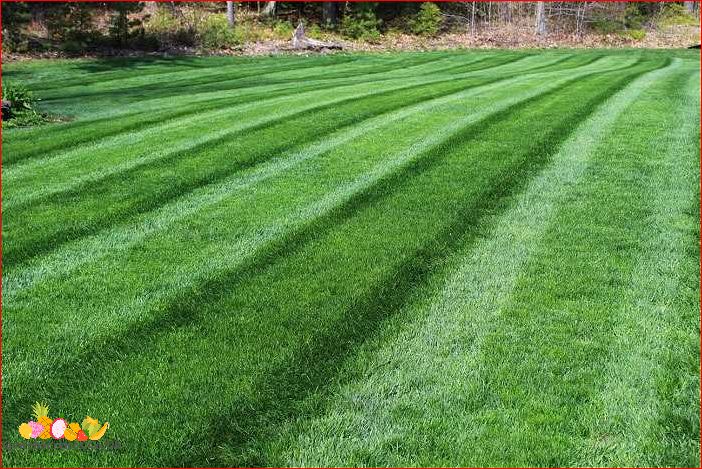
Soil compaction is a common problem in clay soil, and it can make it difficult for grass to grow. Compacted soil has tightly packed particles that prevent air, water, and nutrients from reaching the grass roots. Fortunately, there are several strategies you can use to deal with soil compaction and promote healthy grass growth.
1. Aeration
Aeration is the process of creating small holes in the soil to allow air, water, and nutrients to penetrate the root zone. This can be done using a manual or mechanical aerator, which removes small plugs of soil from the ground. Aeration should be done when the soil is moist but not overly wet, typically in the spring or fall. This will help alleviate compaction and improve the overall health of the soil.
2. Adding Organic Matter
Adding organic matter, such as compost or well-rotted manure, can help improve the structure of clay soil and reduce compaction. Organic matter helps to break up the compacted soil, allowing for better drainage and root development. Spread a layer of organic matter over the soil and mix it in thoroughly with a garden fork or tiller. This will not only improve the soil structure but also provide valuable nutrients for the grass.
Tip: It’s important to choose organic matter that is well-aged and free from weed seeds to avoid introducing unwanted plants to your lawn.
By implementing these strategies, you can effectively deal with soil compaction in clay soil and create a favorable environment for grass growth. Remember to regularly monitor the soil moisture levels and adjust your watering schedule accordingly. With proper care and maintenance, you’ll be able to enjoy a lush and healthy lawn.
Dealing with Drainage Issues
Proper drainage is crucial for growing grass in clay soil. Clay soil tends to hold water, which can lead to waterlogged conditions that are not ideal for grass growth. Here are some tips for dealing with drainage issues in clay soil:
1. Improve Soil Structure
One way to improve drainage in clay soil is to improve its structure. Adding organic matter such as compost or well-rotted manure can help break up the compacted clay and create channels for water to drain through. Spread a layer of organic matter over the soil and mix it in using a garden fork or tiller.
2. Install Drainage Systems
In areas with severe drainage issues, it may be necessary to install drainage systems such as French drains or dry wells. These systems help redirect excess water away from the grass roots and prevent waterlogging. Consult with a professional landscaper or drainage specialist to determine the best drainage solution for your specific situation.
3. Use Raised Beds or Mounds
If the entire area has poor drainage, consider creating raised beds or mounds for growing grass. These elevated areas provide better drainage and prevent water from pooling around the grass roots. Fill the raised beds or mounds with a mixture of topsoil and compost to create a well-draining growing environment.
4. Avoid Overwatering
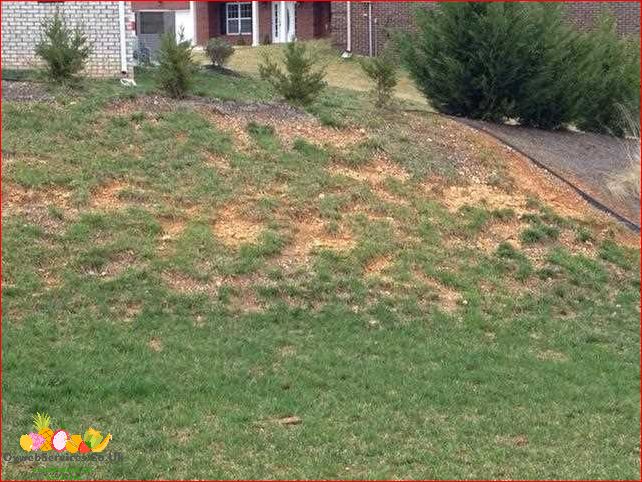
In clay soil, it’s important to avoid overwatering as it can exacerbate drainage issues. Water the grass deeply but infrequently, allowing the soil to dry out between waterings. This encourages the grass roots to grow deeper and helps prevent water from sitting on the surface.
By addressing drainage issues in clay soil, you can create a healthier growing environment for your grass and promote successful growth.
Dealing with Shaded Areas
Shaded areas can present a challenge when trying to grow grass in clay soil. The lack of sunlight can inhibit the growth of grass and make it difficult for it to thrive. However, there are steps you can take to improve the chances of success in shaded areas.
First, it’s important to choose the right type of grass for shaded areas. Some grass varieties are more shade-tolerant than others. Fine fescue and creeping red fescue are two types of grass that can handle shady conditions. These grasses have a slower growth rate and require less sunlight to survive.
In addition to selecting the right grass, you can also improve the soil conditions in shaded areas. Clay soil tends to retain water, which can lead to poor drainage and root rot. To improve drainage, you can add organic matter such as compost or peat moss to the soil. This will help loosen the clay and allow water to drain more effectively.
Another option for dealing with shaded areas is to consider alternative ground cover options. If grass is not thriving in a particular shaded area, you may want to consider planting shade-loving plants or using mulch or gravel instead. These alternatives can provide a low-maintenance and attractive solution for areas where grass struggles to grow.
Finally, it’s important to regularly monitor and maintain shaded areas. Trim back any overhanging branches or shrubs that may be blocking sunlight. Keep the area free of debris and regularly water and fertilize the grass to promote healthy growth.
| Key Points for Dealing with Shaded Areas: |
|---|
| Choose shade-tolerant grass varieties like fine fescue or creeping red fescue. |
| Improve soil drainage by adding organic matter. |
| Consider alternative ground cover options if grass is not thriving. |
| Maintain shaded areas by trimming back overhanging branches and regularly watering and fertilizing the grass. |
Common Mistakes to Avoid
When trying to grow grass in clay soil, there are several common mistakes that people often make. By avoiding these mistakes, you can increase your chances of successfully growing a healthy lawn.
| Mistake | Solution |
| Not preparing the soil properly | Before planting grass seeds, it’s important to prepare the soil by loosening it and removing any debris or weeds. This will create a better environment for the grass to grow. |
| Overwatering | While it’s important to water your lawn regularly, overwatering can lead to shallow root growth and fungal diseases. Make sure to water deeply and infrequently to encourage deep root growth. |
| Using the wrong grass seed | Not all grass seeds are suitable for clay soil. Make sure to choose a grass seed variety that is specifically designed to thrive in clay soil conditions. |
| Not mowing properly | Mowing your lawn too short can stress the grass and make it more susceptible to disease and weed invasion. Set your mower blades to the appropriate height for your grass type and avoid cutting off more than one-third of the grass height at a time. |
| Ignoring soil amendments | Clay soil can benefit from the addition of organic matter, such as compost or peat moss, to improve its structure and drainage. Ignoring soil amendments can hinder the growth of your grass. |
By avoiding these common mistakes, you can give your grass the best chance of thriving in clay soil. Remember to be patient and consistent with your lawn care routine, and you’ll soon enjoy a lush and healthy lawn.
Video:Tips for Growing Grass in Clay Soil
How to Transform Bad Soil Into Good Soil
As Stephanie C. Phillips, I am the voice and green thumb behind QvWebServices.co.uk. My passion for gardening and sharing my knowledge with others has led me to create a space where fellow gardening enthusiasts can find practical advice and inspiration.
From the sun-soaked fields of Texas to the cozy balconies of city dwellers, I strive to guide you through the nuances of growing your own food and beautifying your surroundings with plants. My articles are a reflection of my dedication to the art of gardening, and I hope they encourage you to get your hands dirty and enjoy the rewards of nurturing life from the soil.
Join me on this verdant journey to cultivate not just gardens, but a sense of community and connection to the earth.

